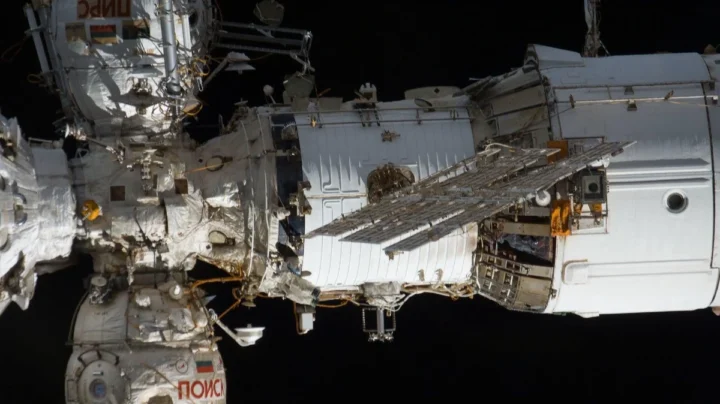The Russian module of the International Space Station has a leak. You lose about 1.7 kilograms of air per day. The Russians say there are no security concerns. However, NASA is concerned. There could be a “catastrophic failure”! So is there a danger or not?
Roscosmos says "there are no problems", but...
In 2019, one of the modules of the International Space Station (ISS) leaked. The escape takes place in a Russian part of the space station - a transfer tunnel - called PrK. Separates a docking port from the rest of the module. In total, the leak loses around 1.7 kilograms of air per day.
As a stopgap solution, astronauts have sealed the PrK when not in use. But how serious is the problem? According to Roscosmos, it is safe, but according to NASA, it could lead to “the possibility of a catastrophic failure”.
On November 13, 2024, NASA held a meeting on the safety and operational readiness of the space station. At this meeting, the former astronaut Bob Cabana, chairman of NASA's International Space Station Advisory Committeereported on a discussion held in September 2024 between NASA and the Russian space agency, Roscosmos, about the escape.
Cabana said at the committee meeting that there is no agreement between NASA and Roscosmos on the severity of the problem. While the Russian team continues to search for and seal the leaks, he does not believe that the catastrophic disintegration of PrK is realistic. NASA expressed concern about the structural integrity of PrK and the possibility of a catastrophic failure.
These Jeff Foust.

The ISS's Zvezda service module, along with two Russian modules attached to its front section. Photo: NASA
Risk management on the space station
Previously, on September 26, 2024, NASA published a report about its risk management on the space station. As of now, the current plan is to keep the space station in good working order until 2030, with a deorbit in 2031.
NASA and Roscosmos continue to work together to resolve structural issues in the Russian service module transfer tunnel. Cracks and air leaks in the tunnel are a leading safety risk...both agencies are collaborating to investigate and mitigate cracks and leaks; determine the root cause, which includes sharing metal samples, welds and Roscosmos research reports; and monitor the station to detect new leaks.
In February 2024, NASA identified an increase in the escape rate... Later, in May and June 2024, ISS Program Officers and Roscosmos met to discuss increased concerns about the increase in the escape rate . The ISS Program subsequently elevated the service module transfer tunnel leak risk to the highest risk level in its risk management system. According to NASA, Roscosmos is confident it will be able to monitor and close the Service Module hatch before the leak rate reaches an unsustainable level. However, NASA and Roscosmos have not agreed on the point at which the escape rate is unsustainable.
While the root cause of the leak remains unknown, both agencies have narrowed their focus to internal and external welding. As of June 2024, there is no indication of further leaks at the station.
Refer to the report.

Here is a list of space station segments by space agency. The location of PrK is in red. Image via NASA.
A disagreement over escape from the International Space Station
Currently, none of the space agencies are sure of the cause of the escape. As Foust reported, Russian engineers believe the cracks are likely caused by “high cyclic fatigue” from microvibrations. However, NASA, on the contrary, believes there are several factors at play, including mechanical pressure and stress, residual stress, module material properties, and environmental exposure.
The Russians believe that continued operations are safe but cannot prove that they are, and the US believes that it is not safe but cannot prove that the Russians are satisfied with it. Therefore, space agencies will turn to external experts to identify the cause of the problem and, consequently, the best solution.
Source: pplware.sapo.pt


